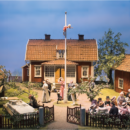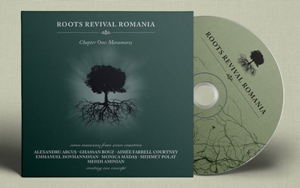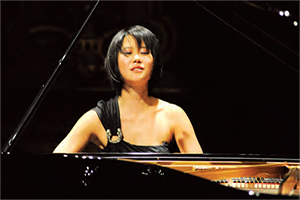
Clara Haskil – a troubled career
“Do not expect the story of an unfortunate existence, but the story of a troubled career”. This is how Clara Haskil has began a short autobiographical text that was to be published in a homage album compiled by the famous French critic Bernard Gavoty. Some of the moments of her life, a life that has never lacked trials and tribulations, can be useful for the today music lovers.
She was born on the 7th of January 1895, in Bucharest, in a humble Jewish family. In 1898, a fire destroys the family`s home; after rescuing his three daughters, the father, tries to save what is still left of the belongings; shortly after, he gets sick with pneumonia and dies a few months later. The mother, who played the piano very well, supports the family by teaching foreign languages classes. When she was 3 years old, Clara Haskil was able to reproduce all the songs her sister played. An uncle introduces her to a teacher of the Bucharest Music Academy and, at the age of six, she gets accepted to study in the class of a well-known teacher. After one year, she obtains a scholarship in Vienna; she goes to study there with the same melomaniac and rigid uncle we have mentioned before.
Here, in Vienna, she has her first concert, at the age of seven; but, in 1905, the family decides that Paris can provide better teachers to the little pianist and so, Clara Haskil gets to study with Alfred Cortot (who, becomes Dinu Lipatti`s teacher three decades later); but, the encounter with this famous virtuoso, often arrogant and tactless is not beneficial for the student – a sensitive and timid girl. She studies the violin in parallel and she obtains the first Prize at both instruments.
The year 1914 brings an unpleasant surprise to Clara Haskil: the doctors discover that she suffers from a serious scoliosis and the family decides she needs the best treatment possible. Clara Haskill did not spend just a few months, as initially hoped, but almost five years, in Berk – a morbid small city located in the North of France – in the famous nursing home specialized in the treatment of bone tuberculosis. The time she spent in Berk overlapped the duration of First World War, with a difference of just a few days. The nineteen year old teenager, already very sensitive and withdrawn, has spent a very long time wearing a plaster corset, in a solitude that has transformed her in a person with little social skills; furthermore, she had rare occasions of playing the piano.
When she returned to Paris, immediately after the war, Clara Haskil did not know that, in the next twenty years, she would play the piano on just a few occasions and she would not be able to survive without the generosity of some Maecenas who she befriended: Mrs. Gélis-Didot, Mrs. Paul Desmarais, Mrs. Gétaz, Lili Pastré and the Princess of Polignac. Although she had reached artistic maturity, her simple and natural art was not liked in that time when people were particularly appreciating virtuosity and the extremely subjective nature of artists. This Maecenas organized a tour for her in the United States of America; the famous conductor Leopold Stokowski, after playing with her, wrote an enthusiastic letter to his agent: “I am convinced that her talent is far above that of most young artists, and that she certainly has a career before her, especially as she is devoted to music with a warmth that is almost fanaticism”. Indeed, the agent contacted Clara Haskil but he demanded that she pay a few thousand dollars in advance for promoting a possible tour and cynically told her: “You`d better have less talent and more money”.
There were years when she only had a few concerts; some of them for charity, in others, the fee she would receive was the dress she got to wear at the event; yet, there were some happy moments: she played Beethoven`s sonatas together with old Eugène Ysaÿe, with the cellist Pablo Casals – the violin player and with George Enescu; in 1936, she meets Dinu Lipatti in Paris, with whom she develops a very intense friendship.
When the war started, she was in Paris but, in March 1941, helped by her friends again, she goes on leaving to Marseille, in the “zone libre”. Following a police inspection – because of her ID papers that had the “Jew” stamp on – she is arrested, but released shortly after the quick intervention of a friend. In the spring of 1942 she complained of having violent headaches and she felt that her sight was damaged. The doctors discover a tumor that was pressing on the optical nerve; her friends rally together, collecting 30.000 francs, and manage to bring from Paris a famous doctor.
The surgery, that involved trephining, lasted 4 hours and was done only with local anesthesia (the skin of the head was anesthetized with cocaine). During the surgery, Clara Haskil drummed the Concerto in E-flat major by Mozart with her fingers on a table to ensure that both her memory and fingers were not being damaged. In November 1942, five days before Marseille is occupied by the Germans, she leaves the city and takes refugee in Switzerland, which became her adoptive country.
Although she receives enthusiastic reviews, she is not acknowledged as she deserved and, only at the end of the fifth decade begins her true career. In 1950 she is invited by Pablo Casals at the Prades Festival, where she meets violinist Arthur Grumiaux, with whom she would form a famous duo and signs an exclusivity contract with Philips Records. At 57 years old, she has her own house and piano for the first time. She becomes friends with Chaplin who became Charlot for her just to make her laugh out loud; the great actor said that he has met three geniuses in his life: Einstein, Clara Haskil and Churchill. The press is full of praises and the public follows everywhere. Many people wondered how is was possible that her music performances were so moving while her singing did not seem to be spectacular at all. “She does not assert herself by force, but by character; she does not shine, she irradiates, she conveys the very grace of music: in two hours she wipes the shiny and vain memory of an army of virtuosos”, said Bernard Gavoty.
The testimony of pianist Tatiana Nikolayeva, regarding the first encounter with the art of the Romanian pianist, is one of the most touching ever. In 1956, she was invited to play in Salzburg, and everyone in Moscow told her not to miss the concerts of Karajan, who was considered the new Toscanini. During the first part of the program, Herbert von Karajan has conducted a Mozart symphony in a very interesting manner, but Tatiana Nikolayeva did not consider at all that he was as good as Toscanini. The Concerto in D minor by Mozart was next after the break, with Clara Haskil as the lead player, and Nikolayeva goes on with her story: “Suddenly, an old woman, with a shapeless loop of grey hair, hunch-backed and barely walking, has come on the scene. I was convinced she will not be able to play the piano in her condition and I wanted to get out of there because I was so afraid for her. She sat at the piano and remained still, with her head bend above the keys during the orchestra introduction that was magnificently conducted by Karajan. Still, he did not seem as good as Toscanini. After that, came the moment of the piano. Haskil plays the first phrase. I immediately burst into tears. Transfigured, the orchestra comes in to accompany. And, all of the sudden, Karajan becomes Toscanini”.
On the 6th of December 1960, everything ends with an absurd death. Clara Haskil arrives at the Brussels railroad station, together with her sister; Arthur Grumiaux`s wife awaits her, they were supposed to play together the next day. She refuses a helping hand to descend the numerous stairs, she trips and falls, hitting her head. She dies at the hospital a few hours later.
54 years after Clara Haskil is gone, a festival with her name is born in Romania, in Sibiu. It is a small festival, but one that had extraordinary guests. The initiator and the director of the festival is the Romanian pianist Alina Azario, who lived for fifteen years in Germany.









